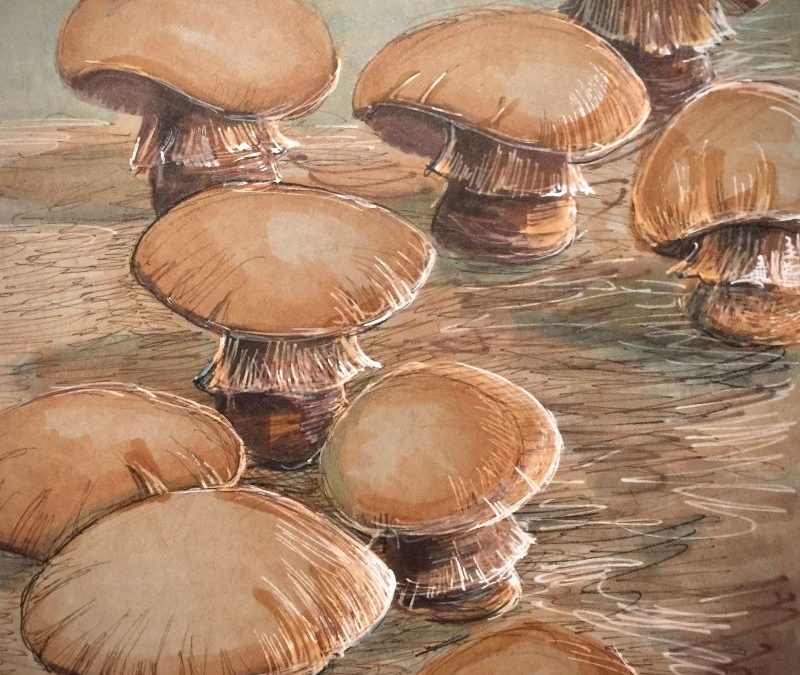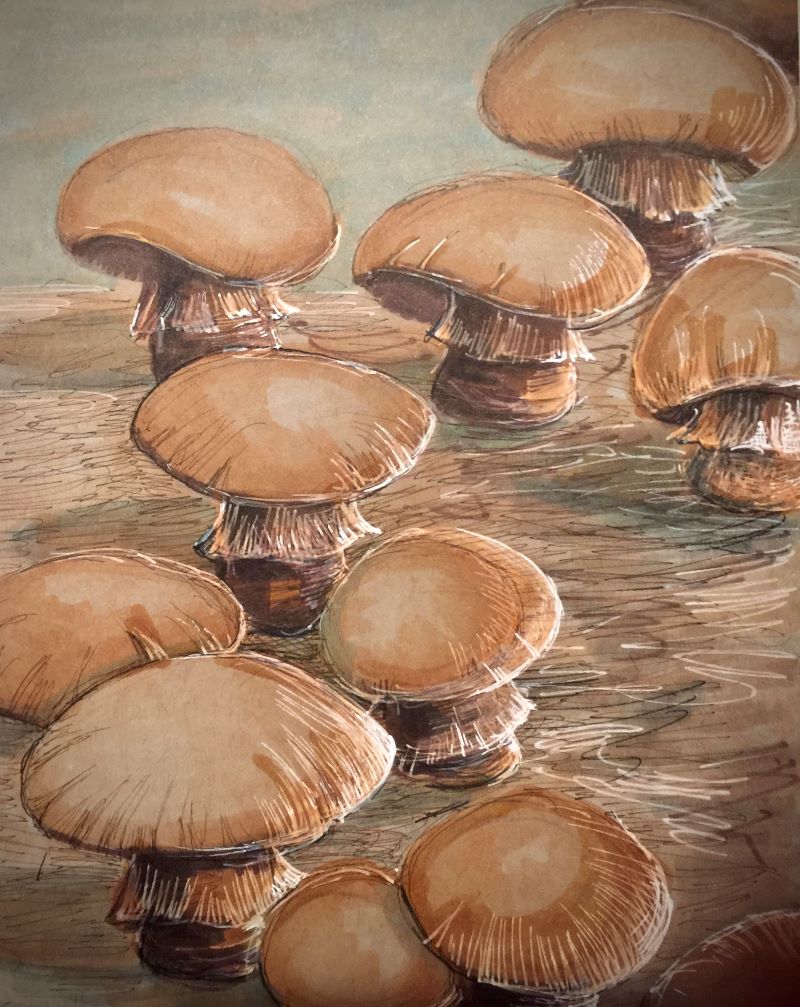
Fungi can cure or kill, nourish life, and also decompose it back into soil. Fossil evidence for fungi is limited, but the ability to analyze molecular data has led to revelations about the evolution of this extraordinary family of organisms. Although mycology (the study of fungi) is a discipline of botany (the study of plants), molecular research in the 1990s revealed that fungi are more closely related to animals than they are to plants. The current theory is that Fungi and Animalia are related groups that evolved from a protozoan ancestor more than 1.3 billion years ago, before going their separate ways.
It’s estimated that there may be as many as five million species of fungi, ranging from tiny yeast organisms to the massive Armillaria ostoyae, a species of long-lived fungi that is thought to be the largest living fungal colonies in the world—the largest and oldest known specimen is estimated to be 2,500 years old, and covers more than 3.4 square miles of Oregon’s Malheur National Forest, and is thought to have grown from a single spore. This “humongous fungus” is unusual, but A. ostoyae is not. It occurs in forests throughout the Pacific Northwest and parts of Asia. This is a parasitic fungi that can kill the trees it feeds on, but it is also an important recycler, converting its hosts back into compost.
This is the time of year when A. ostoyae produces fruiting bodies—the edible honey mushroom that is prized by mushroom hunters—but almost any mushroom one comes across is part of something much bigger than itself. That fairy ring of white mushrooms in the lawn, or the bright yellow sulfur mushrooms that appear like magic on the side of a tree in the garden are the fruit of unseen networks of fungi. Pick a mushroom and you are connecting with an invisible world.
Humans have valued mushrooms for thousands of years. Ötzi the Iceman—the name given to the 5,300-year-old mummified remains of an alpine traveler discovered in 1991 in the Ötztal region of the Tyrolean Alps—carried two different types of mushrooms. Fragments of Fomitopsis betulina, the birch polypore, were found in a pouch Ötzi carried. It is theorized that he may have used this mushroom as a treatment for intestinal parasites. The other mushroom, Fomes fomentarius, or hoof fungus (named for its hoof-like shape), was worn on a cord around his neck. This species is still used as tinder for starting fires.
The earliest written record of humans cultivating mushrooms comes from a description written in the Song dynasty of China, in 1209. He Zhan, a record keeper, recorded a short description of shiitake mushroom cultivation. Shiitake mushrooms, which are the fruiting body of a fungus that thrives in decaying hardwood—especially oak— remain one of the most popular and profitable mushrooms in cultivation, and account for 25 percent of yearly mushroom production.
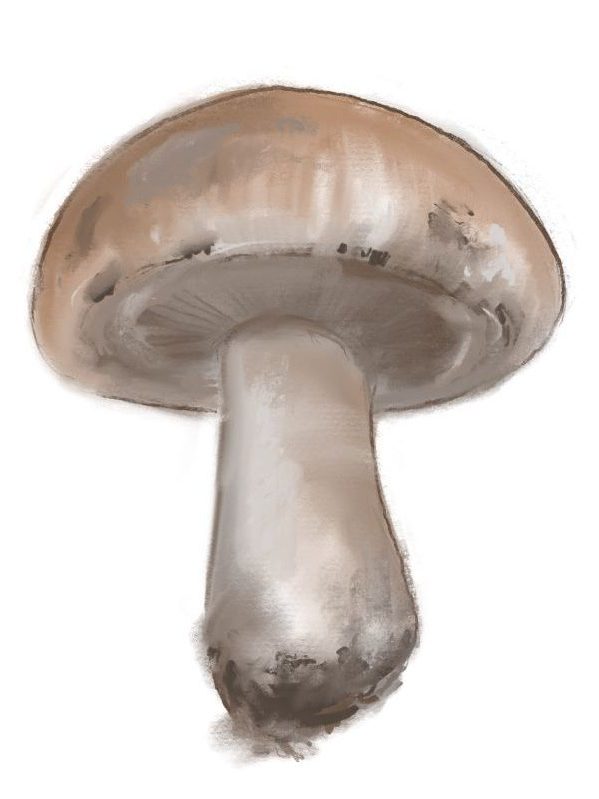
Mushroom cultivation in Europe was first documented in 1707, by French botanist Joseph Pitton de Tournefort. The mushroom being farmed? It was the now ubiquitous Agaricus bisporus, the button mushroom that appears in grocery stores as white mushrooms, crimini mushrooms and portabella mushrooms. White button mushrooms were developed from a genetic fluke in the 1920s. The big portabella mushroom is the mature form of the same species.
Advancements in fungiculture are bringing never-before cultivated mushroom varieties to the marketplace. These include oyster mushrooms, beech mushrooms, lion’s head, and even cordyceps, a medicinal mushroom that is parasitic in the wild, where it colonizes insects, but is now cultivated on a bug-free substrate of rice hulls.
New advancements in the science of propagating mushrooms are opening the door for more. Jacob and Karsten Kirk, twin Danish biologists, in collaboration with the Royal Veterinary and Agricultural University and the University of Copenhagen, have developed a technique to cultivate black morels indoors year-round. The morel, an expensive and ephemeral delicacy, has always eluded commercial production.
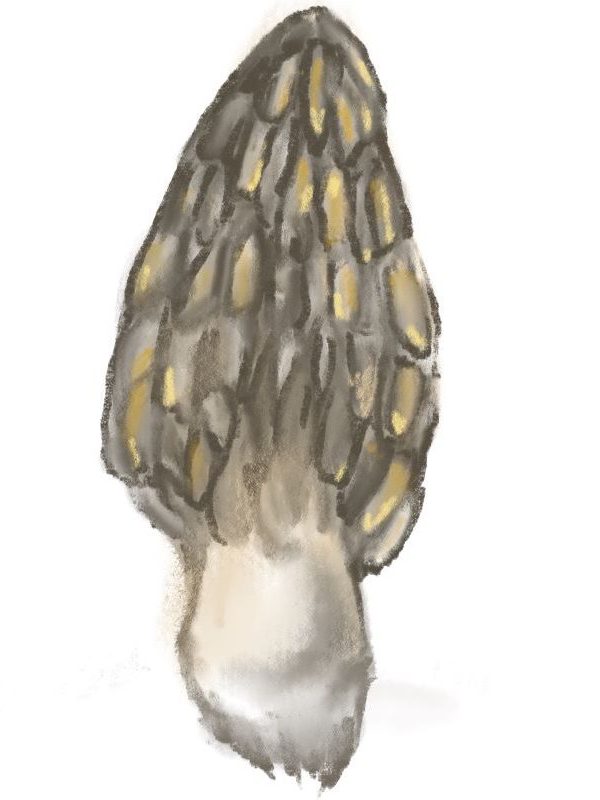
Even truffles, the black gold of culinary mushrooms that are infamously challenging to cultivate, are now being farmed in France. An estimated 95 percent of commercially available truffles are the product of truffle orchards. It’s a time-consuming process that takes many years to yield a harvest, but it can also be highly profitable.
Access to more varieties of mushrooms is a boon for cooks and mushroom lovers, but there are many desirable species of edible mushroom that still only grow in the wild. Some mushrooms, like the shaggy ink cap, are so ephemeral they only “bloom” for a few hours. Many species of mushroom-producing fungi take years to grow from a spore to the point where the mycelium—the network of root-like tendrils in the soil or in dead trees, or other substrate—is mature enough to produce fruiting bodies. The much-loved boletus edulis, or porcini mushroom, can take more than a decade to fruit. The work of the fungi that produce mushrooms, including breaking down organic material, mostly occurs out of sight. Networks of mycorrhizal fungi may even provide a kind of rudimentary communication network between trees and shrubs.
A 2016 study revealed that the “wood-wide web” of soil fungi can help regulate soil moisture, carbon distribution, and more, over a wide area, benefitting entire plant communities. It is also theorized that this web forms a way for trees to communicate on an elemental level and share resources.
The paper, “Belowground carbon trade among tall trees in a temperate forest,” authored by researchers Tamir Klein, Rolf TW Siegwolf, Christian Körner and published in the journal Science, rocked the scientific community. Subsequent research continues to reveal the complex interconnectedness of plants and fungi. That may evoke visions of lush forests far away, but a 2005 U.S. Forestry Service study found that there are “probably more than a hundred mycorrhizal fungi associated with coast live oaks alone in Southern California.” The local version of the “wood-wide web” exists right here, under our feet. It’s an unseen world of startling complexity.
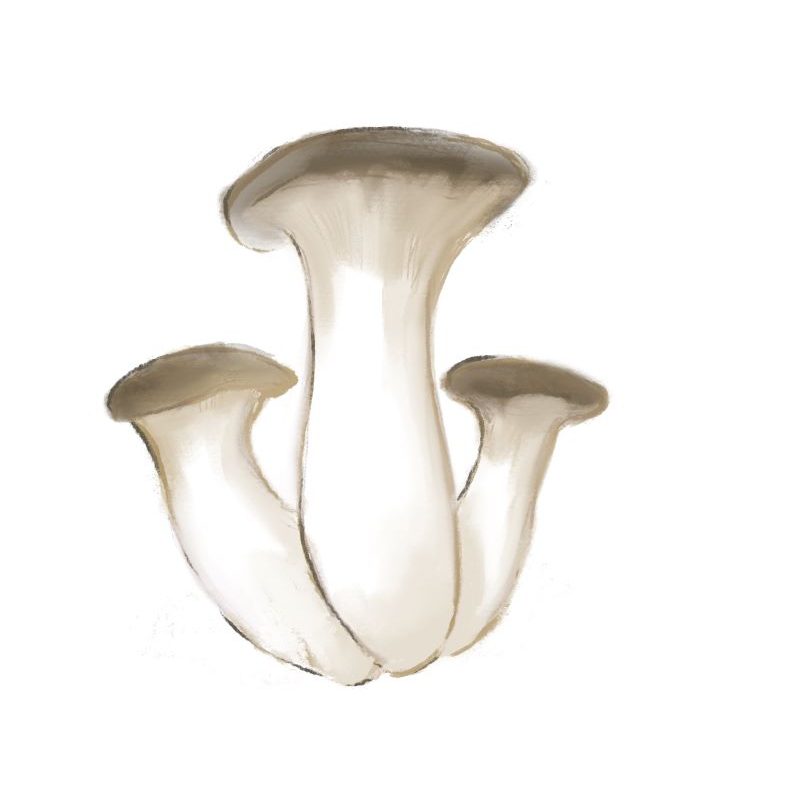
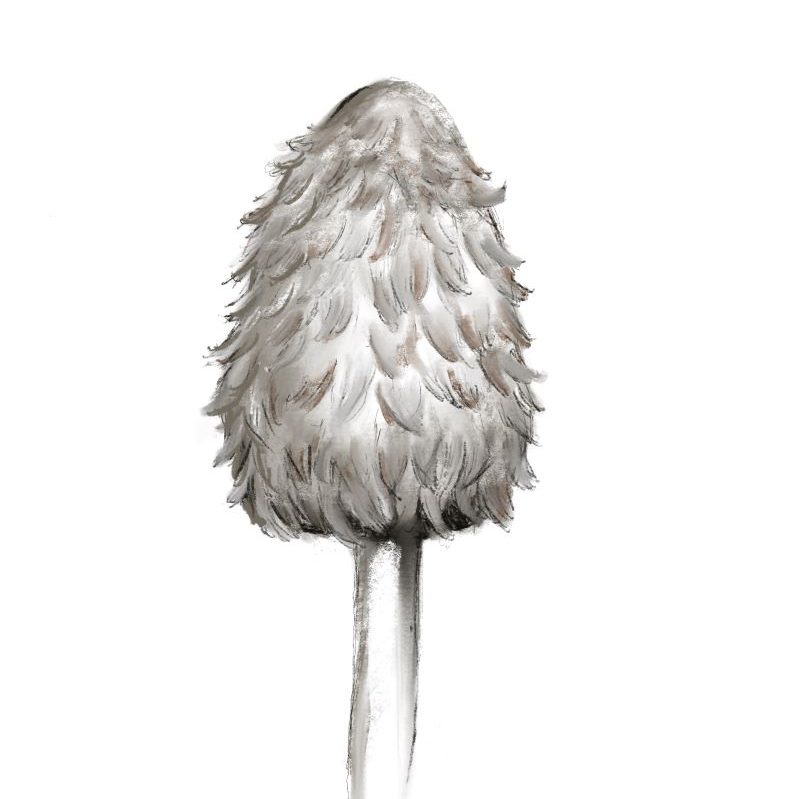
Fall is peak mushroom season in the Pacific Northwest. The first rains of the season will send local mushroom hunters into the hills here, too, although fungi fanciers here may have to wait longer—a la Niña forecast suggests we could be in for a dry winter. That won’t stop the legion of newly minted foragers from turning up off the trail and sometimes even in people’s yards, hunting for fungal gold, and social media attention. Mushrooms need rain to flourish. Mushroom foragers need knowledge, wisdom and good sense. This is not a forgiving hobby. Eating the wrong mushroom can have dire consequences.
Anyone who is planning to forage for edible mushrooms needs to be trained by someone who really is an expert, and have the common sense to restrict their activity to places where mushroom hunting is legal. Extracting anything—mushrooms, acorns, plants—from public lands in the Santa Monica Mountains National Recreation Area is illegal. Foraging on other people’s private property without permission is also illegal. Even the side of the road has protections put in place in the 1920s to prevent the unscrupulous from making the toyon berry extinct through demand for holiday decorations. While the idea of foraging for wild food is beguiling, it isn’t alway practical or even possible.
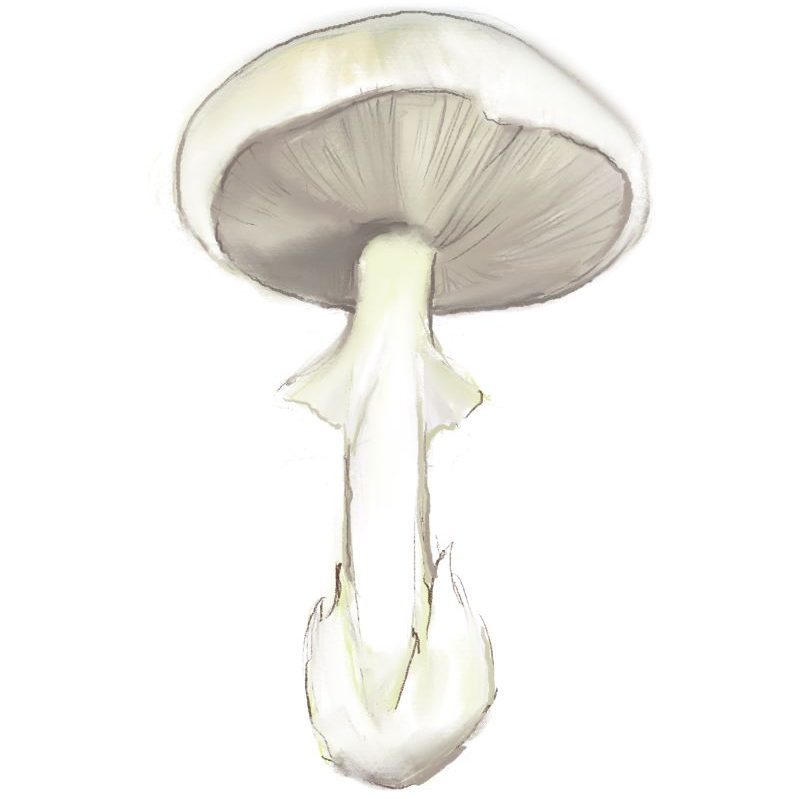
While fatalities caused by toxic mushrooms are uncommon, they occur, and the victims aren’t always amateurs. Edible mushrooms can have some very convincing look-alikes. Gastrointestinal upset is the most common side effect of eating the wrong mushroom, but there are inevitably a small number of fatalities every year, most of them from mushroom hunters who have mistaken the highly toxic members of the amanita family for a number of innocuous, edible species. Amanita phalloides, the Death Cap mushroom, is an extremely unwelcome invasive in the Santa Monica Mountains. This innocent appearing mushroom accounts for the vast majority of mushroom related fatalities, but mushrooms are strange things.
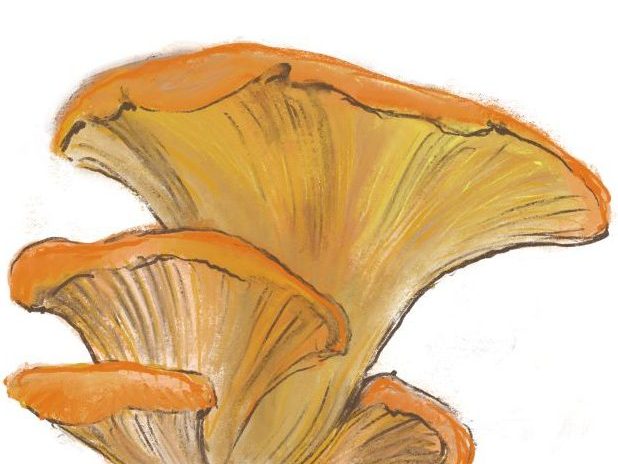
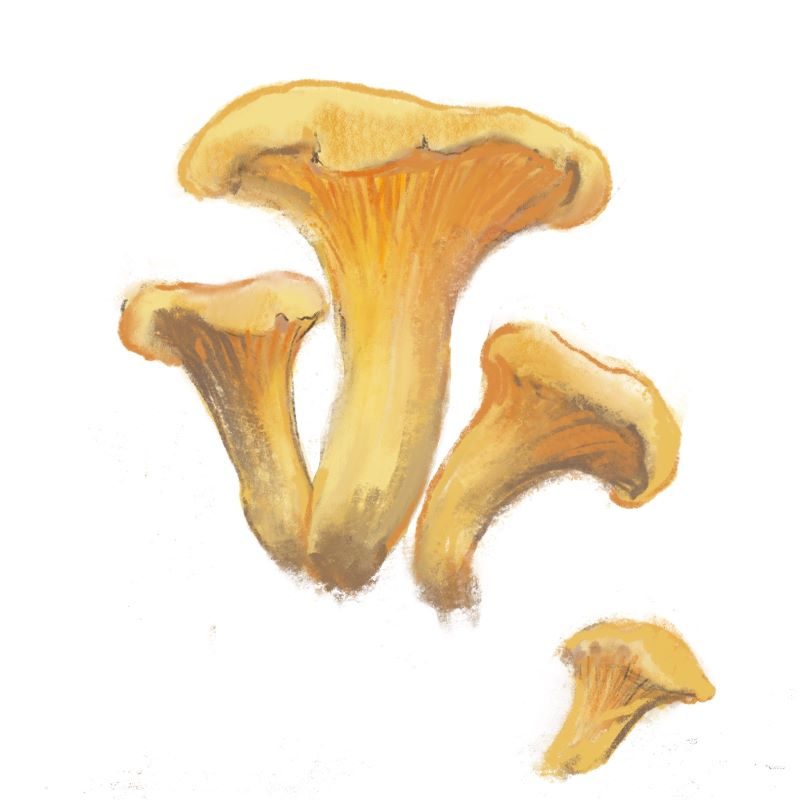
The Jack-o-lantern mushroom, often mistaken by the unwary for the edible and highly prized golden chanterelle, is toxic and causes vomiting, nausea, diarrhea, and stomach cramps, but is rarely fatal, while another species that is sometimes mistaken for a chanterelle—Paxillus involutus, or brown roll-rim—contains an antigen that can trigger the immune system to attack red blood cells, causing a potentially fatal condition called Immune Hemolytic Anemia.
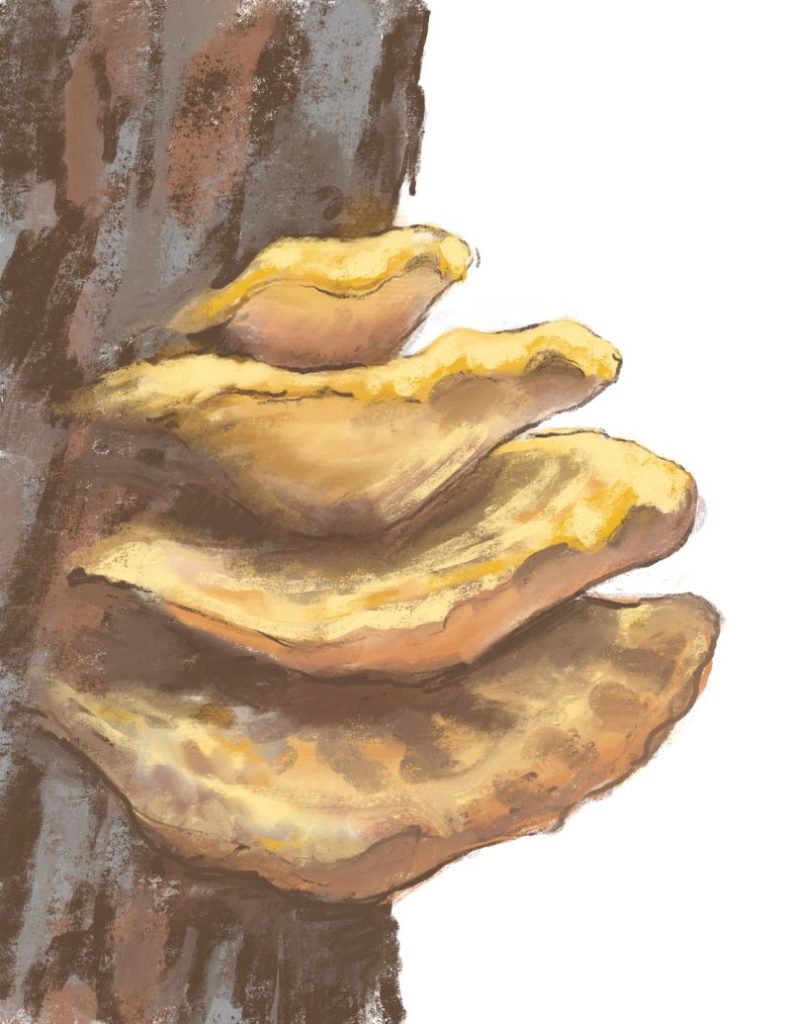
Many mushrooms are a source of important nutrients, including selenium, vitamin D and B6; others contain carcinogens, hallucinogenic compounds, and powerful, potentially deadly toxins like amatoxin, gyromitrin, and orellanine. Even edible mushrooms require respect. Many people eat the western sulfur shelf mushroom—Laetiporus gilbertsonii—without ill effect; others experience mild to severe abdominal pains. This mushroom’s edibility may depend on the type of tree it grows on—mushrooms grown on oaks are said to be safer than those that grow on pines and eucalyptus—or not, the research is inconclusive.
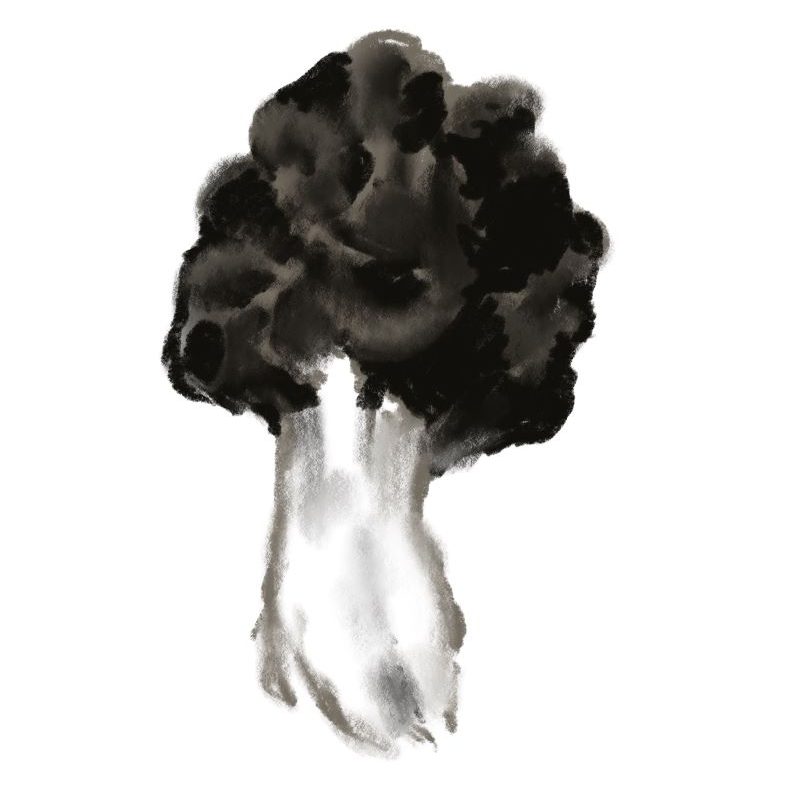
The black morel, Morchella elata, is one of the most desirable wild edible mushrooms, but it must be cooked before eating to prevent gastric upset. Even cultivated mushrooms can cause problems. Raw or undercooked shiitake mushrooms can cause severe dermatitis—itchy, red and purple welts and blotches, and mushroom farmers can become sensitized to the spores of oyster mushrooms, resulting in skin and respiratory allergies. Some people are sensitive to mushrooms that other people can eat without ill effect. Even mushroom experts have different views on the edibility of some species: the black elfin saddle, Helvella dryophila, a morel look-alike, is often described as toxic, but it is consumed cooked without ill effect by some, while making others violently ill. It’s always a good idea to go slow with a new mushroom variety, even the kind at the grocery store. Make sure of the ID and sample carefully before digging into a hefty serving.
Here at TNT, we prefer to leave wild mushrooms for the wildlife that depend on them, and do our foraging at the farmer’s market, where an increasing number of fresh edible mushrooms are available, offering mushroom enthusiasts a safe and sustainable way to sample a variety of fungi. Fall is peak mushroom season, and buying mushrooms from small farms and from knowledgeable foragers is a way to help support sustainable mushroom culture. Mushroom enthusiasts can also try growing their own. Kits for a wide variety of edible mushrooms are widely available, and fun and easy to grow, just remember, mushrooms demand respect. Button mushrooms can be eaten raw, but most other mushrooms should be cooked thoroughly before eating.
There’s a good reason why mushrooms are associated with magic and the miraculous. They appear like magic and disappear just as quickly. They can nourish, cure, or kill. Some may hold the secret for cancer and Alzheimer’s disease treatments. Mushrooms that contain the psychedelic chemical psilocybin have guided shamans into the spirit world for millennia. Now, multiple studies have found that they hold promise for victims of PTSD, and other psychological issues that conventional medicine cannot always fully treat. Some mushrooms contain beguiling scents that are used in perfumes, many edible species are rich in nutrients and umami—the elusive savory taste that enhances flavor. Even the mushrooms that appear in the garden after the first rain of the season are a marvel—part of something huge that we are only just beginning to understand.





